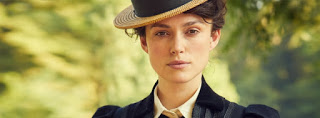Colette
Reading Time: 2 minutes


A matinee screening of ‘Colette’ provided welcome relief from both Christmas shopping and the debilitating humidity of FNQ in late December.
‘Colette’ is cinema to be savoured. It is also a showcase for the significant cinematic presence of Keira Knightley. No longer cast in lighthearted and often lightweight roles, in ‘Colette’ she displays impeccable comedic, dramatic and sensual acting.
This biographical drama is based on the life of French Actress and Novelist, Sidonie-Gabrielle Colette. Colette is a young woman who marries an older libertine and is introduced to the social life of bohemian Paris at the turn of the 20th century. Her husband is a notorious womaniser while she has a series of lesbian relationships. However, it is her brilliant writing (based on her own coming of age) and the publication of her ‘Claudine’ books under her husband’s name that is at the core of the story told in this film. The plight of women at this point in history (and to a large extent still relevant today) is effectively highlighted, with only one or two direct references.
I found the film to be a believable and satisfying blend of drama, comedy and sensuality. The avant-garde society depicted in this film is not caricatured, but provides a context that makes the film’s more confronting themes reconcilable with what we normally consider to be the social norms of the turn of the 20th century.
The film’s dialogue is clever but not reduced to slick one liners or lengthy pontification. Visually, the period costumes add significant style and appeal to this film’s outstanding cinematography.
In the hands of populist Hollywood directors, this film’s sexual themes may have resulted in a confronting depictions of sexuality. However, British independent director, Wash Westmoreland, very adeptly retains and highlights the sensuality while presenting just enough sexuality to convey its importance, without ensuring that it would dominate recollections of the film.

Inspired to learn more about the real Colette, I have discovered that she wrote over 50 novels, was nominated for the 1948 Nobel Prize in Literature, did much to champion women’s rights and lived a life of far greater excess than the film reveals – posing topless in 1906, being openly bisexual, having three non-monogamous marriages, and even having an affair with her 31 years younger step-son.
(Visited 25 times, 1 visits today)